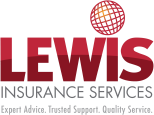Proceed with caution when using the $20k Budget tax deduction
So, your business has a turnover under $2 million and you want to know how to use the $20,000 immediate tax deduction that’s been all over the news?
Before you start spending, there are a few things you need to know.
Does your business make a profit?
Deductions are only useful to offset against tax. If your business makes a loss then a tax deduction is of limited benefit because you’re not paying any tax. Losses can often be carried forward into future years but you lose the benefit of the immediate deduction.
Small businesses with a turnover of $2m or below make up 97.5% of all Australian businesses. The latest Australian Taxation Office (ATO) statistics show that well under half of these businesses paid net tax. That means that the $20,000 instant asset write-off is useful to less than half of the Australian small businesses targeted.
So, if your business makes a loss and you start spending to take advantage of the immediate deduction, all you are likely to do is to increase the size of your losses with no corresponding offset.
Cashflow first!
Cashflow is more important than an immediate deduction. Assuming your business qualifies for the deduction, the most important consideration is your cashflow. If there are purchases and equipment that your business needs, that equipment has an immediate benefit to the business, and your cashflow supports the purchase, then go ahead and spend the money. The $20,000 immediate deduction applies as many times as you like so you can use it for multiple individual purchases.
But, your business still needs to fund the purchase for a period of time until you can claim the tax deduction and then, the deduction is only a portion of the purchase price.
Let’s take the example of a small bakery. The bakery is in a company structure and has a taxable income for 2014/2015 of $49,545. The owner purchases a new $13,750 oven on 2 June 2015 and installs it straight away. The cost of the oven is claimed in the bakery’s 2014/2015 tax return resulting in a tax deduction of $13,750.
So, for the $13,750 spent on the oven, $4,125 is returned as a reduction of the company’s tax liability (i.e., 30% company tax rate in the 2015 income year). For the bakery, they need the cashflow to support the $13,750 purchase until the businesses tax return is lodged after the end of the financial year. With the $4,125 reduction of the company’s tax liability, the business has fully funded the remaining $9,625.
From 1 July 2015, the bakery would also receive the small business company tax cut of 1.5%. If the business also had taxable income of $49,545 in the 2016 income year, the tax cut would provide a reduction of $743.
It’s important not to rely on the advice of the person you are purchasing from. There is a lot of misinformation out there in the market right now and it’s important to know how the concessions apply to you.
Is your business eligible
To use the instant asset write-off, your business needs to be eligible. The first test is that you have to be a business – not just holding assets for investment purposes.
The second is the aggregated turnover of your business needs to be below $2m. Aggregated turnover is the annual turnover of the business plus the annual turnover of any “affiliates” or “connected entities”. The aggregation rules are there to prevent businesses splitting their activities to access the concessions. Another entity is connected with you if:
- You control or are controlled by that entity; or
- Both you and that entity are controlled by the same third entity.
What has changed?
In general, a deduction is available for purchases your business makes. What has changed for small businesses under $2m turnover is the speed at which they can claim a deduction. Before the Budget announcement, small business could immediately deduct business assets costing less than $1,000. On Budget night, the Treasurer announced that the threshold for the immediate deduction will increase to $20,000 at 7.30pm, 12 May 2015 for small businesses with an aggregated turnover less than $2 million. The increased threshold is intended to apply until 30 June 2017.
For small business, assets above $20,000 can be allocated to a pool and depreciated at a rate of 15% in the first year and 30% for each year thereafter.
If your business is registered for GST, the cost of the asset needs to be less $20,000 after the GST credits that can be claimed by the business have been subtracted from the purchase price. If your business is not registered for GST, it is the GST inclusive amount.
How do I make the most of the immediate deduction?
There are a few tricks to applying the instant asset-write off:
Second hand goods are ok
It does not matter if the asset you are buying for your business is new or second hand. So, you could still claim the deduction on say, second hand machinery you have bought.
What is not included
There are a number of assets that don’t qualify for the instant asset write off as they have their own set of rules. These include horticultural plants, capital works (building construction costs etc.), assets leased to another party on a depreciating asset lease, etc.
Also, you need to be sure that there is a relationship between the asset purchased by the business and how the business generates income. For example, four big screen televisions are unlikely to be deductible for a plumbing business.
Assets must be ready to use
If you use the $20,000 immediate deduction, you have to start using the asset in the financial year you purchased it (or have it installed ready for use). This prevents business operators from stockpiling purchases and claiming tax deductions for goods they have no intention of using in the short term.
Business and personal use
Where you use an asset for mixed business and personal use, the tax deduction can only be claimed on the business percentage. So, if you buy an $18,000 second hand car and use it 80% for business and 20% for personal use, only $14,400 of the $18,000 can be claimed.
Reminder – What will change on 1 July 2015
For Business
- Small business tax cut – 1.5% for companies and 5% tax discount for unincorporated small businesses under $2m (capped at $1,000)*
- Employee share scheme rule changes to make the schemes more attractive particularly to start-ups (covered in our April update)*
- ‘Fly in fly out’ and ‘drive in drive out’ (FIFO) workers will be excluded from the Zone Tax Offset (ZTO) where their normal residence is not within a ‘zone’*
- Start-ups able to immediately deduct a range of professional expenses required to start up a business – such as professional, legal and accounting advice.*
- The way work related deductions for car expenses are calculated will change. The ‘12% of original value method’ and the ‘one‑third of actual expenses method’ will be removed. The ‘cents per kilometre method’ will be modernised, replacing the three current engine size rates with one rate set at 66 cents per kilometre to apply for all cars*.
Superannuation
- The terminally ill will be able to access super earlier*
- Employers with 20 employees or more must use SuperStream for employee contributions.
Individuals
- Changes to family tax benefits – income test changes, add on child payment removed, and changes to large family supplement.
* Announced change not yet law.
The material and contents provided in this publication are informative in nature only. It is not intended to be advice and you should not act specifically on the basis of this information alone. If expert assistance is required, professional advice should be obtained.
Should you have any questions regarding this article, and wish to find out more information, please contact the author;
Mark Stewart, Director of Integrity Wealth
Ph: 1300 780 818 or email marks@integritywealth.com.au
Web: www.integritywealth.com.au
The information contained herein is provided on the understanding that it neither represents nor is intended to be advice or that the authors or distributor is engaged in rendering legal or professional advice. Whilst every care has been taken in its preparation no person should act specifically on the basis of the material contained herein. If assistance is required, professional advice should be obtained.
Disclaimer
Integrity Wealth is an independent business and in making this referral, we do not advise on the products and services Integrity Wealth may provide to you, nor do we represent that Integrity Wealth products and services are right for you. You need to make your own decision based on the information Integrity Wealth provides.

